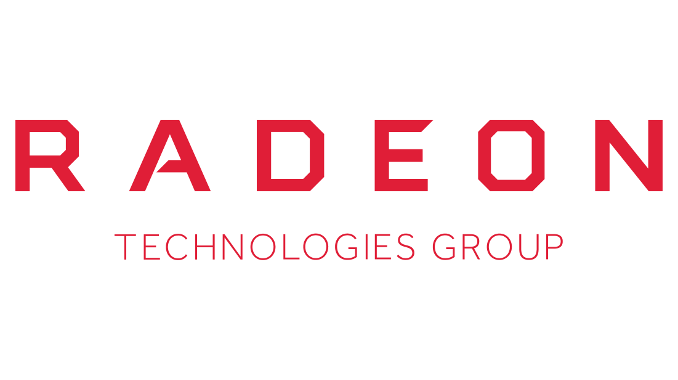AMD Announces Real-time Ray Tracing Support for ProRender and Radeon GPU Profiler 1.2
by Nate Oh on March 19, 2018 8:15 PM EST
First disclosed this evening with teaser videos related to a GDC presentation on Unity, today AMD is announcing two developer-oriented features: real-time ray tracing support for the company's ProRender rendering engine, and Radeon GPU Profiler 1.2.
Though Microsoft’s DirectX Raytracing (DXR) API and NVIDIA’s DXR backend “RTX Technology” were announced today as well, the new ProRender functionality appears to be largely focused on game and graphical development as opposed to an initiative angled for real-time ray tracing in shipping games. Similarly, while Radeon GPU Profiler (RGP) has not received a major update since December 2017, as it is AMD’s low-level hardware-based debugging/tracing tool for Radeon GPUs this is likewise purely for developers.
In any case, for Radeon ProRender AMD is bringing support for mixing real time ray-tracing with traditional rasterization for greater computational speed. As with today's other real-time ray tracing announcements, AMD's focus is on capturing many of the photorealism benefits of ray tracing without the high computational costs. At a basic level this is achieved by limiting the use of ray tracing to where it's necessary, enough so that it can be done in real-time alongside a rasterizer. Unfortunately beyond a high-level overview, this is all AMD has revealed at this time. We're told a proper press release will be coming out tomorrow morning with further details.
As for the new version of RGP, 1.2 introduces interoperability with RenderDoc, a popular frame-capture based graphics debugging tool, as well as improved frame overview. The update also brings detailed barrier codes, relating to granular regulation of graphical work among DX12 units.
Regardless, AMD has yet more to say on the ray-tracing topic. Along with tomorrow's press release, AMD has a GDC talk scheduled for Wednesday on “Real-time ray-tracing techniques for integration into existing renderers,” presumably discussing ProRender in greater detail.










14 Comments
View All Comments
wumpus - Monday, March 19, 2018 - link
My understanding is that ray tracing isn't and hasn't been the best way to render things for some time, but takes far less "special casing" than the best methods.In other words, it will make Indie/Unity games look "almost AAA" level, but don't count on them being quite there. If it works (and works reasonably well on nvidia (or consoles), we will hopefully see more interesting indie works.
That or AAA games won't look as good but suddenly be wildly more profitable for publishers. Actually I'd count on that second bit a lot more (if it works well enough on consoles, which I'm not really expecting).
Egg - Tuesday, March 20, 2018 - link
Best in what aspect? AFAIK, for pure visual quality, ray tracing (and similar algorithms, like the ones here https://en.wikipedia.org/wiki/Global_illumination#... are still the best. They're fundamentally different than the rasterization approach used in gamesWhich other methods do you have in mind that are better?
Zizy - Tuesday, March 20, 2018 - link
Pure naive ray tracing is crap, lacking quality and speed. Existing rasterization hacks are faster yet look better than such ray tracing ever could.A few additions to get modern ray tracing that can at least handle soft shadows (say by using beams instead of individual rays) ... and now we are talking. Potential to have near perfect quality for 99% of cases, but it is even slower and I guess it will never make sense for games - except in addition to another method.
But you still have issues with oil on water, for which you need TMM or such. Then you have butterfly wings, requiring FEM/FDTD/, maybe want to add some physical scattering and again you need other methods to calculate scattering from that ...
Fortunately at least nonlinear effects can be safely ignored - if you are looking at such light, you won't for long.
SlyNine - Sunday, March 25, 2018 - link
Yaaa... No. Look at something like Cycles. It's not real time, hell one image can take 5 hours. But it looks a HELL of a lot better than any rasterization.If you want physically accurate materials, lighting, etc. You need ray tracing. But the biggest advantage, and the one they will be pushing for will be reflections.
Targon - Wednesday, August 15, 2018 - link
You make the mistake that what ray tracing lacks quality. True ray tracing will always provide the best quality, but due to the speed(or lack of it), it has not been useful for real time animation. Anything that reduces quality will of course, improve the performance, but at the expense of not making ray tracing all that useful.As GPU technology improves, the potential grows for making ray tracing useful for real time tasks. We are still decades away from that, but it is there. The key is still to provide an API so that different hardware methods can be used/attempted and not need to have software specifically written for one vendors implementation.
mr_tawan - Tuesday, March 20, 2018 - link
Sounds like AMD, and Microsoft + Nvidia didn't talk to each other...Zizy - Tuesday, March 20, 2018 - link
Sounds like they did and AMD didn't like the way discussion went :)SydneyBlue120d - Tuesday, March 20, 2018 - link
I'm really curious to know if and what level of support Ryzen APU will provide...lucam - Thursday, March 22, 2018 - link
PowerVR has implemented that much earlier and in a more effective way..